YARDLEY, PA – The Delaware River Joint Toll Bridge Commission today approved a contract with an engineering consulting firm – GPI/Greenman Pederson, Inc. of Lebanon, N.J. – to design a rehabilitation project expected to be carried out in 2024 at the New Hope-Lambertville Toll-Supported Bridge.
The rehabilitation project is expected to accomplish four major objectives:
- Repair various pieces of the bridge’s steel superstructure;
- Clean and repaint the bridge’s steel superstructure and underlying bearings;
- Replace the current fiberglass walkway panels with an improved system of quieter, slip-resistant foam-core fiber-reinforced-polymer panels; and
- Install a programmable LED lighting system to highlight the bridge’s architectural profile at night along the river. This would be the first time the bridge gets outfitted with such a lighting
The bridge’s last rehabilitation occurred in 2004. Because of the extent of work performed during that project, the Commission anticipates the upcoming bridge rehabilitation’s travel impacts will be less severe. However, the bridge’s walkway will need to be closed for a yet-to-be-determined period to allow for the removal of old surface panels and the installation of new ones.
GPI’s design contract award is for an amount not to exceed $1,895,134. A significant design objective for GPI will entail sequencing the project’s tasks in a manner that will mitigate the range of travel impacts needed to carry out project construction in 2024.
An initial task for GPI is performing a detailed bridge inspection. This work will confirm and assess the breadth of structural deficiencies to be addressed under the rehabilitation project. (Note: The inspections are not expected to significantly impact motorists, but the bridge’s walkway could be closed or restricted for brief periods when engineers are conducting their work.)
After the bridge inspection process, design engineers will map the course of action to address identified issues with the bridge and plan out the other major tasks the Commission has budgeted to be conducted during the project. GPI will develop drawings, list structural details, compile construction specifications and map traffic-control plans, sequencing the work to cushion the durations and severity of impacts to motorists, pedestrians, and the bridge’s two host communities.
During the latter part of the design process, two open house sessions (one in New Hope and one in Lambertville) are planned to inform the public about the project’s purpose, relay substructure and superstructure conditions that need rehabilitation or repair, show bridge architectural lighting renderings, explain any travel restrictions that might be needed to carry out the project’s construction stages, and summarize the project’s anticipated work schedule. The public would be encouraged to ask questions and provide comment at those sessions.
The Bridge Commission is planning to create a project-specific webpage for the project. The plan is for the webpage to be online sometime in March and remain available for the project’s duration. The webpage would be updated periodically as more information becomes available during project design and construction.
The current schedule anticipates that the design process will be completed by the fall. Project construction would be advertised for competitive bids in late 2023 so a contract could be awarded in early 2024. Project construction could begin by late winter 2024.
The current six-span steel Pratt-truss bridge superstructure was constructed between April 1904 and July 1904. The bridge replaced a former wooden covered bridge that was destroyed in the devastating “Pumpkin Flood” of October 1903. The former wooden bridge had three original spans on the Pennsylvania side constructed in 1814 and three replacement spans on New Jersey side constructed after the ice-induced “Bridges Freshet” of January 1841.
The current steel-truss superstructure was constructed for the second incarnation of the New Hope Delaware Bridge Co., which operated it as a tolled crossing – including for pedestrians and bicyclists – for a little more than 15 years. The local shareholder-owned bridge company sold the bridge to the states of Pennsylvania and New Jersey for $225,000 in a transaction arranged by the former Joint Commission for Elimination of Toll Bridges on December 31, 1919. Tolls were removed three days later. The states conveyed ownership of the bridge to the Delaware River Joint Toll Bridge Commission on July 1, 1987.
The aging bridge has a four-ton weight limit, a 10-foot height restriction, and a 15 MPH speed limit. It carried an average of 12,400 vehicles per day in 2022.
